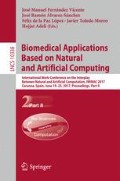Abstract
Quasi-stationary sections of a deformable linear object (DLO) hanging freely from two extreme points can be modeled either by catenaries or parabolic curves, depending on the conditions of the UAVs. DLO transportation is an instance of a leader-follower platoon team strategy, in which the local quadrotor control must cope with the dynamic perturbations due to the DLO linking the quadrotors. The quadrotor team control has two phases, one achieving a spatial configuration with equal energy consumption, the other is to manage the horizontal motion which is the transportation process per se. We propose a Model Reference Adaptive Control (MRAC) for the quadrotors team, which uses fuzzy modeling of the error in order to modulate the activation of the adaptation rules applied to proportional-derivative (PD) controller parameters, which are derived as error gradient descent rules. In this paper, we contribute the parabolic representation of the DLO and improved follow the leader control, testing the MRAC stability and robustness under a series of experiments.
Access this chapter
Tax calculation will be finalised at checkout
Purchases are for personal use only
References
Argentim, L.M., Rezende, W.C., Santos, P.E., Aguiar, R.A.: PID, LQR and LQR-PID on a quadcopter platform. In: 2013 International Conference on Informatics, Electronics Vision (ICIEV), pp. 1–6, May 2013
Duro, R.J., Graña, M., Lope, J.: On the potential contributions of hybrid intelligent approaches to multicomponent robotic system development. Inf. Sci. 180(14), 2635–2648 (2010)
Echegoyen, Z., Villaverde, I., Moreno, R., Graña, M., d’Anjou, A.: Linked multi-component mobile robots: modeling, simulation and control. Robot. Auton. Syst. 58(12), 1292–1305 (2010)
Estevez, J., Graña, M.: Robust control tuning by PSO of aerial robots hose transportation. In: Ferrández Vicente, J.M., Álvarez-Sánchez, J.R., de la Paz López, F., Toledo-Moreo, F.J., Adeli, H. (eds.) IWINAC 2015. LNCS, vol. 9108, pp. 291–300. Springer, Cham (2015). doi:10.1007/978-3-319-18833-1_31
Estevez, J., Lopez-Guede, J.M., Graña, M.: Particle swarm optimization quadrotor control for cooperative aerial transportation of deformable linear objects. Cybern. Syst. 47(1–2), 4–16 (2016)
Estevez, J., Lopez-Guede, J.M., Graña, M.: Quasi-stationary state transportation of a hose with quadrotors. Robot. Auton. Syst. 63(2), 187–194 (2015). Cognition-oriented advanced robotic systems
Lopez-Guede, J.M., Estevez, J., Graña, M.: Online fuzzy modulated adaptive PD control for cooperative aerial transportation of deformable linear objects. Integr. Comput.-Aided Eng. Preprint(Preprint), 1–15 (2016)
Fernandez-Gauna, B., Lopez-Guede, J.M., Graña, M.: Transfer learning with partially constrained models: application to reinforcement learning of linked multicomponent robot system control. Robot. Auton. Syst. 61(7), 694–703 (2013)
Floreano, D., Wood, R.J.: Science, technology and the future of small autonomous drones. Nature 521(7553), 460–466 (2015)
Hsu, Y., Pan, C.: The static WKB solution to catenary problems with large sag and bending stiffness. Math. Probl. Eng. 2014 (2014)
Larsen, L., Pham, V.L., Kim, J., Kupke, M.: Collision-free path planning of industrial cooperating robots for aircraft fuselage production. In: 2015 IEEE International Conference on Robotics and Automation (ICRA), pp. 2042–2047, May 2015
Lopez-Guede, J.M., Fernandez-Gauna, B., Graña, M.: State-action value modeled by ELM in reinforcement learning for hose control problems. Int. J. Uncertain. Fuzziness Knowl.-Based Syst. 21(supp02), 99–116 (2013)
Lopez-Guede, J.M., Graña, M., Ramos-Hernanz, J.A., Oterino, F.: A neural network approximation of L-MCRS Dynamics for reinforcement learning experiments. In: Ferrández Vicente, J.M., Álvarez Sánchez, J.R., Paz López, F., Toledo Moreo, F.J. (eds.) IWINAC 2013. LNCS, vol. 7931, pp. 317–325. Springer, Heidelberg (2013). doi:10.1007/978-3-642-38622-0_33
Nguyen, D.Q., Gouttefarde, M., Company, O., Pierrot, F.: On the simplifications of cable model in static analysis of large-dimension cable-driven parallel robots. In: 2013 IEEE/RSJ International Conference on Intelligent Robots and Systems, pp. 928–934, November 2013
Pruner, E., Necsulescu, D., Sasiadek, J., Kim, B.: Control of decentralized geometric formations of mobile robots. In: 2012 17th International Conference on Methods Models in Automation Robotics (MMAR), pp. 627–632, August 2012
Pruner,E.: Control of self-organizing and geometric formations. Ph.D. thesis. Université d’Ottawa/University of Ottawa (2014)
Seraji, H.: Decentralized adaptive control of manipulators: theory, simulation, and experimentation. IEEE Trans. Robot. Autom. 5(2), 183–201 (1989)
Su, Y., Qiu, Y., Liu, P.: Optimal cable tension distribution of the high-speed redundant driven camera robots considering cable sag and inertia effects. Adv. Mech. Eng. 6 (2014)
Wei, K., Zhang, L.X., Ren, A.D.: The analysis method of highline cable of alongside replenishment system based on suspended cable theory. In: Advanced Materials Research, vol. 490, pp. 633–637. Trans Tech Publications (2012)
Wen, N., Zhao, L., Xiaohong, S., Ma, P.: Uav online path planning algorithm in a low altitude dangerous environment. IEEE/CAA J. Autom. Sin. 2(2), 173–185 (2015)
Yao, R., Tang, X., Wang, J., Huang, P.: Dimensional optimization design of the four-cable-driven parallel manipulator in fast. IEEE/ASME Trans. Mechatron. 15(6), 932–941 (2010)
Yeh, F.-K.: Attitude controller design of mini-unmanned aerial vehicles using fuzzy sliding-mode control degraded by white noise interference. Control Theory Applications 6(9), 1205–1212 (2012). IET
Author information
Authors and Affiliations
Corresponding author
Editor information
Editors and Affiliations
Rights and permissions
Copyright information
© 2017 Springer International Publishing AG
About this paper
Cite this paper
Estevez, J., Graña, M. (2017). Improved Control of DLO Transportation by a Team of Quadrotors. In: Ferrández Vicente, J., Álvarez-Sánchez, J., de la Paz López, F., Toledo Moreo, J., Adeli, H. (eds) Biomedical Applications Based on Natural and Artificial Computing. IWINAC 2017. Lecture Notes in Computer Science(), vol 10338. Springer, Cham. https://doi.org/10.1007/978-3-319-59773-7_13
Download citation
DOI: https://doi.org/10.1007/978-3-319-59773-7_13
Published:
Publisher Name: Springer, Cham
Print ISBN: 978-3-319-59772-0
Online ISBN: 978-3-319-59773-7
eBook Packages: Computer ScienceComputer Science (R0)

